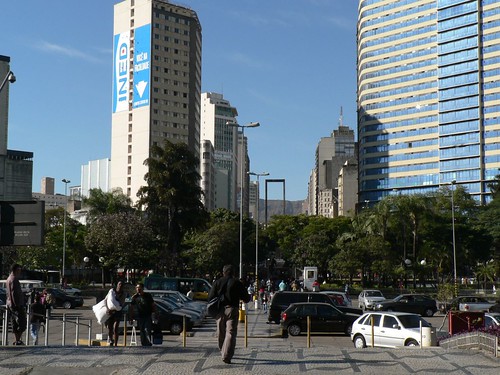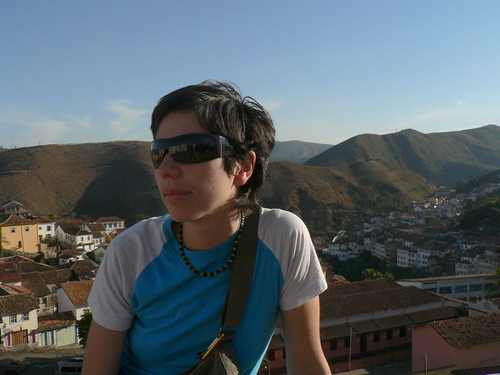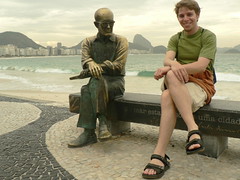 From Rio de Janeiro we first stopped in Belo Horizonte for couple of days. The city itself was nothing particularly interesting, but people there seem to enjoy life a lot. We witnessed many spontaneous street parties, people playing samba on improvised instruments and women dancing bare feet. On Saturday night we visited a forró club, popular music and dance, originating in north-eastern Brazil. We found the dance quite passionate, on times even vulgar. It seemed, however, that teenagers at the club mastered it well, spinning and singing a lot. Belo Horizonte is the capital of the region Minas Gerais and was built on behalf of gold hunting demands in 18th and 19th century. Today the city is recognized as a commercial and student metropolis. We had big troubles finding our way in the city, since it was reconstructed in 1890 and throughout the centre it has, apart from horizontal and vertical, also diagonal streets.
From Rio de Janeiro we first stopped in Belo Horizonte for couple of days. The city itself was nothing particularly interesting, but people there seem to enjoy life a lot. We witnessed many spontaneous street parties, people playing samba on improvised instruments and women dancing bare feet. On Saturday night we visited a forró club, popular music and dance, originating in north-eastern Brazil. We found the dance quite passionate, on times even vulgar. It seemed, however, that teenagers at the club mastered it well, spinning and singing a lot. Belo Horizonte is the capital of the region Minas Gerais and was built on behalf of gold hunting demands in 18th and 19th century. Today the city is recognized as a commercial and student metropolis. We had big troubles finding our way in the city, since it was reconstructed in 1890 and throughout the centre it has, apart from horizontal and vertical, also diagonal streets. Ouro Preto is a small colonial town, close to Belo Horizonte. It used to be the capital of the region, before Belo Horizonte became that. There are still many streets conserved in the way they were built three hundreds years ago. Picturesque façades, tall buildings, narrow streets and colourful doors are all meant for tourists today, while long ago they used to be houses of lucky gold hunters from Europe. We tried to look around for an apartment there since we liked the town in the mountains a lot. It turned to be rather difficult to get hosted there. The town was rather small and therefore had few offers of apartments to rent.
Ouro Preto is a small colonial town, close to Belo Horizonte. It used to be the capital of the region, before Belo Horizonte became that. There are still many streets conserved in the way they were built three hundreds years ago. Picturesque façades, tall buildings, narrow streets and colourful doors are all meant for tourists today, while long ago they used to be houses of lucky gold hunters from Europe. We tried to look around for an apartment there since we liked the town in the mountains a lot. It turned to be rather difficult to get hosted there. The town was rather small and therefore had few offers of apartments to rent.Our one day visit ended with the decision to continue up north to see how we like Salvador before settling anywhere.



